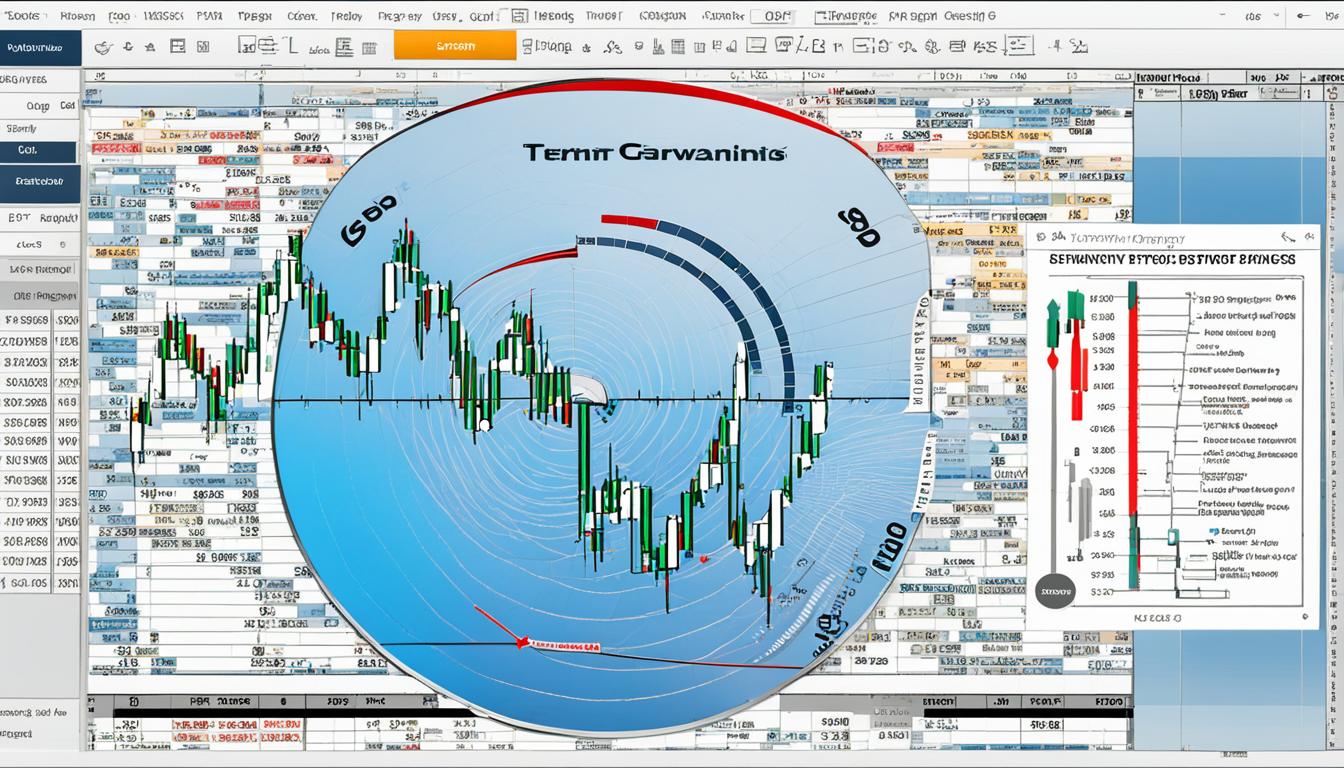In the commodities market, understanding futures spot arbitrage is key to making money. It’s about using the price differences between futures contracts and spot prices. This approach is very effective for trading today and helps make good profits through careful trading.
The goal of this article is to explain futures spot arbitrage clearly. We will look into how traders use price differences to their advantage. It’s all about finding those arbitrage opportunities to get the best returns. This guide is for anyone wanting to get better at investing or trading.
Let’s dive into the best ways to do this, talk about the market, and see how financial tools affect it. By the end of this, you’ll know key strategies for winning in futures spot arbitrage.
Key Takeaways:
- Comprehend the concept of futures spot arbitrage and its relevance.
- Understand how to exploit price discrepancies between futures and spot prices.
- Explore essential profit strategies for maximizing gains.
- Learn about the influence of market dynamics on trading efficiency.
- Recognize the integral role of financial derivatives in arbitrage practices.
Understanding Futures Spot Arbitrage
Futures spot arbitrage is a trading strategy that uses price differences. It looks at the spot price and future contracts of an asset. Traders aim to make a profit from these price gaps. This helps keep the market efficient and pricing accurate.
Definition and Concept
Futures spot arbitrage allows investors to gain from price imbalances. It involves buying an asset at a lower price in the spot market. Then, selling it at a higher price in the futures market. This chance for profit lasts until the prices merge, offering a risk-free gain.
To be successful, traders must understand asset pricing well. They also need to be quick in making trades. This is before the market adjusts itself.
Historical Context
Arbitrage in futures started with the creation of commodity markets. Traders have always looked for small price differences to profit from. The start of the Chicago Board of Trade (CBOT) in 1848 was a big moment. It has influenced how arbitrage strategies have evolved.
Looking at the past helps us understand arbitrage today. It shows how trading practices have grown more sophisticated over time.
Key Strategies for Successful Futures Spot Arbitrage
Successful futures spot arbitrage depends on the strategies traders use. Traders employ several techniques like long/short futures, pairs trading, and statistical arbitrage. These methods help exploit market inefficiencies. Let’s dive into these strategies and see how they work.
Long/Short Futures Strategy
The long/short futures strategy is a key arbitrage method. It involves buying (long) and selling (short) futures contracts at the same time. This approach helps manage risk from market changes. Traders use it to balance their positions and improve their chances of making a profit. It’s especially useful in volatile markets where prices differ a lot.
Pairs Trading Strategy
Pairs trading lets traders use arbitrage to their advantage. They take long and short positions in two related assets. The aim is to benefit from any price differences between these assets. This strategy lessens the risk from general market movements. It needs a good grasp of the assets’ past prices and an accurate forecast of their future prices.
Statistical Arbitrage Methods
Statistical arbitrage uses math and algorithms to find arbitrage opportunities. Traders analyze big datasets to spot exploitable patterns. This approach relies on quantitative analysis for making smart trade decisions. Though it’s complex, statistical arbitrage can greatly improve risk and reward for traders if used right.
Navigating Market Inefficiencies in Commodities Trading
Understanding market inefficiencies in commodities trading is key for successful futures spot arbitrage. Traders must grasp supply and demand dynamics and geopolitical impacts. This understanding helps find chances for profit when prices differ from what’s expected.
Supply and Demand Factors
Supply and demand analysis is crucial for spotting market inefficiencies. Imbalances between production and consumption can cause price changes. For example, a sudden increase in supply or a drop in demand can lower prices. This situation creates opportunities for arbitrage.
On the other hand, supply chain disruptions or rising demand can increase prices. This also presents arbitrage opportunities. Spotting these shifts is vital for traders.
Geopolitical Influences
Geopolitical factors significantly impact price volatility in commodities markets. Factors like political instability, sanctions, and trade policies can create inefficiencies. For instance, tensions in oil-rich areas can make oil prices swing.
Sanctions on important commodity exporters may lead to shortages, pushing prices up. These changes offer chances for arbitrage. Traders must understand these dynamics to take advantage of price differences quickly.
The Role of Financial Derivatives in Arbitrage
In the world of futures spot arbitrage, financial derivatives are key. They help traders to improve their positions and deal with risks. These contracts are based on assets like commodities or market indices. Options and swaps are crucial for strategic trading.
Understanding Derivatives
Derivatives play a big role in the markets. They help traders protect against or guess future prices. They allow for many strategies to earn money while keeping risk low. For example, options let traders choose to buy or sell at a set price later.
Utilizing Options and Swaps
Options let traders handle price changes smartly. They use these contracts to protect or aim for futures spot arbitrage gains. Using call and put options, traders reduce risk and can earn more.
Swaps are deals to exchange financial items over time. They help in arbitrage by fixing price differences. For example, swapping variable commodity prices for fixed ones cuts volatility. This makes outcomes more certain.
Using these tools, traders get better at arbitrage. They can trade more effectively and make profits with less risk. Experts and real stories show options and swaps’ importance in futures spot arbitrage.
FAQ
What is Futures Spot Arbitrage?
Futures Spot Arbitrage is a way to make money by finding price differences in markets. It involves buying and selling commodities in different markets at the same time. This strategy helps make markets more efficient and can lead to profits.
Why is Futures Spot Arbitrage important in the commodities market?
It’s key because it makes the market work better and keeps prices stable. Traders use it to find profit opportunities, helping ensure the prices of goods are correct. This contributes to a market where prices reflect true value more closely.
Can you explain the historical context of Futures Spot Arbitrage?
Futures Spot Arbitrage dates back hundreds of years and has grown with the trade market. Traders have always looked for price gaps to earn money. Key developments like the start of the Chicago Mercantile Exchange marked its evolution. Now, with better tools and methods, traders use more complex strategies.
What are the key strategies for successful Futures Spot Arbitrage?
Successful strategies include buying and selling futures contracts to balance risks. Also, trading two related assets helps reduce risks. Using math and computers, traders find and use price differences. These approaches help in making good decisions in trading.
How do market inefficiencies present opportunities for arbitrage in commodities trading?
When the market gets it wrong, like under or overvaluing a commodity, it creates chances for profit. For example, a sudden natural disaster can change prices quickly. By spotting these moments, traders can make strategic bets to gain.
What role do financial derivatives play in arbitrage?
Derivatives like options and swaps are crucial for managing the risks involved in arbitrage. Options allow trading under certain conditions but without obligation, while swaps help in managing cash flow changes. These tools are important for planning and executing arbitrage strategies effectively.






